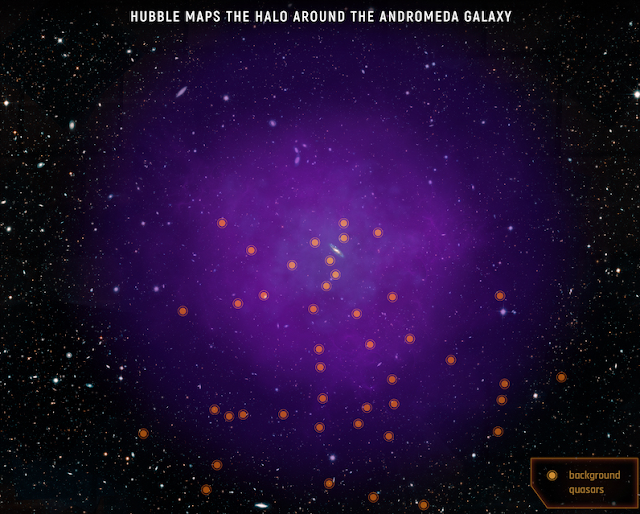The Andromeda galaxy, the Milky Way’s nearest spiral galaxy, is not visible in the night sky unless specifically sought after.
The merging of the Milky Way and Andromeda has started.
However, without optical assistance, it can only be seen as a hazy spot of light in the night sky. But in the far future, Andromeda will shine brightly in our sky, becoming bigger as it gets closer. Even though our two galaxies are currently 2.5 million light-years apart, the future merger of our two galaxies has already started.
The Andromeda galaxy is now approaching our Milky Way at around 70 miles per second (113 kilometers per second). Consequently, our merger will take place five billion years from today. In August of 2020, however, the peer-reviewed Astrophysical Journal revealed fresh evidence indicating that the collision between our galaxies had actually begun.
The news regarding the Andromeda galaxy originated from Project AMIGA, which utilizes the Hubble Space Telescope to examine the Andromeda galaxy’s environs in deep space. Absorption Map of Ionized Gas in Andromeda is abbreviated as AMIGA.

A vast envelop of gas, dust, and stray stars known as a galactic halo surrounds the Andromeda galaxy, our Milky Way, and other galaxies. Galaxies’ halos are incredibly faint, making it challenging to locate them. These astronomers measured the amount of light absorbed by background quasars to estimate the size of the Andromeda galaxy’s halo. They were astonished to find that the halo of the Andromeda galaxy stretches far beyond its observable boundaries.
In fact, it extends in other directions and for half the distance to the Milky Way (1.3 million light-years) (up to 2 million light-years).
Does this then imply that the halos of the Andromeda and Milky Way galaxies are in contact?
From our vantage point within the Milky Way, it turns out that we cannot readily measure the features of our galaxy’s halo. Due to the identical size and appearance of the two galaxies, astronomers hypothesize that the Milky Way’s halo would likewise be similar.
In other words, it appears that the weak halos of the galaxies have indeed begun to interact. Therefore, in a sense, the collision between our two galaxies has already begun.
NASA provided the below photographs in 2012. They are artists’ interpretations of what a person on Earth could observe as the Andromeda galaxy hurtles towards us.
The images below are based on Hubble Space Telescope measurements of the Andromeda galaxy’s velocity and computer simulations of their ultimate collision. In addition, a series of studies released in 2012 demonstrated that our Milky Way galaxy and the Andromeda galaxy would combine to create a single large elliptical galaxy, or football-shaped galaxy, as opposed to sometimes glancing off each other.
In February of 2022, Roeland van der Marel, an astronomer at the Space Telescope Science Institute, told Discover Magazine:
Whether the impact is head-on or more of a glancing blow has little effect on the outcome.
This is a brand-new, enormous elliptical galaxy.

However, other galaxies besides the Milky Way and Andromeda will also be involved in this merger. The other large galaxy in our Local Group of galaxies, M33, also referred to as the Triangulum galaxy, will also play a role, as shown in the movie below.
In the video below, the Triangulum galaxy is the smaller object between the Andromeda and Milky Way galaxies. The Triangulum galaxy is unlikely to join the merger, but it may eventually collide with the Milky Way while performing a cosmic dance with the two larger galaxies.
In the entirety of the cosmos, galaxies are colliding. With the assistance of sophisticated telescopes, astronomers watch galactic collisions and their aftermaths. When two galaxies merge, they are in some respects similar to ghosts; they just pass through one another. Because stars inside galaxies are separated by such vast distances, this is the case. Therefore, stars do not generally collide when galaxies merge.
Thus, the merger will influence the stars in both the Andromeda galaxy and our Milky Way. The Andromeda galaxy has around a billion billion stars. The Milky Way contains around 300 billion stars. Both galaxies’ stars will be placed in new orbits around the newly fused galactic core.
According to experts who participated in the 2012 study, the sun will likely be blasted into a new sector of our galaxy.
However, they stated, “the Earth and solar system are not in risk of destruction.”
How then is life on Earth? Will life on earth survive the merger? In around 7.5 billion years, the sun will become a red giant, at which point it will expand and engulf the Earth. But even before to then, the sun’s luminosity or inherent brightness will grow. This will finally occur in around four billion years.

As solar energy reaching the Earth rises, the temperature of the Earth’s surface will rise. We may see a greenhouse effect comparable to that occurring on the neighboring planet Venus. Therefore, there is a significant chance that terrestrial life will be extinct when the union is complete.
However, by that time, perhaps some earthlings will have achieved space travel. Perhaps we will have abandoned the planet and our solar system. Andromeda’s collision with the Milky Way may still be seen, but from a slightly altered viewpoint.
The merging between the Milky Way and Andromeda has already begun. In 5 billion years, the two spiral galaxies will merge into one enormous elliptical galaxy.





